JAJSGT4C June 2014 – September 2021 TPS55340-Q1
PRODUCTION DATA
- 1 特長
- 2 アプリケーション
- 3 概要
- 4 Revision History
- 5 Pin Configuration and Functions
- 6 Specifications
-
7 Detailed Description
- 7.1 Overview
- 7.2 Functional Block Diagram
- 7.3 Feature Description
- 7.4 Device Functional Modes
-
8 Application and Implementation
- 8.1 Application Information
- 8.2
Typical Applications
- 8.2.1
TPS55340-Q1 Boost Converter
- 8.2.1.1 Design Requirements
- 8.2.1.2
Detailed Design Procedure
- 8.2.1.2.1 Custom Design With WEBENCH® Tools
- 8.2.1.2.2 Selecting the Switching Frequency (R4)
- 8.2.1.2.3 Determining the Duty Cycle
- 8.2.1.2.4 Selecting the Inductor (L1)
- 8.2.1.2.5 Computing the Maximum Output Current
- 8.2.1.2.6 Selecting the Output Capacitor (C8 through C10)
- 8.2.1.2.7 Selecting the Input Capacitors (C2 and C7)
- 8.2.1.2.8 Setting the Output Voltage (R1 and R2)
- 8.2.1.2.9 Setting the Soft-Start Time (C7)
- 8.2.1.2.10 Selecting the Schottky Diode (D1)
- 8.2.1.2.11 Compensating the Control Loop (R3, C4, and C5)
- 8.2.1.3 Application Curves
- 8.2.2
TPS55340-Q1 SEPIC Converter
- 8.2.2.1 Design Requirements
- 8.2.2.2
Detailed Design Procedure
- 8.2.2.2.1 Selecting the Switching Frequency (R4)
- 8.2.2.2.2 Duty Cycle
- 8.2.2.2.3 Selecting the Inductor (L1)
- 8.2.2.2.4 Calculating the Maximum Output Current
- 8.2.2.2.5 Selecting the Output Capacitor (C8 Through C10)
- 8.2.2.2.6 Selecting the Series Capacitor (C6)
- 8.2.2.2.7 Selecting the Input Capacitor (C2 and C7)
- 8.2.2.2.8 Selecting the Schottky Diode (D1)
- 8.2.2.2.9 Setting the Output Voltage (R1 and R2)
- 8.2.2.2.10 Setting the Soft-Start Time (C3)
- 8.2.2.2.11 Mosfet Rating Considerations
- 8.2.2.2.12 Compensating the Control Loop (R3 and C4)
- 8.2.2.3 Application Curves
- 8.2.1
TPS55340-Q1 Boost Converter
- 9 Power Supply Recommendations
- 10Layout
- 11Device and Documentation Support
- 12Mechanical, Packaging, and Orderable Information
パッケージ・オプション
メカニカル・データ(パッケージ|ピン)
- RTE|16
サーマルパッド・メカニカル・データ
- RTE|16
発注情報
6.6 Typical Characteristics
VI = 5 V, TA = 25°C (unless otherwise noted)
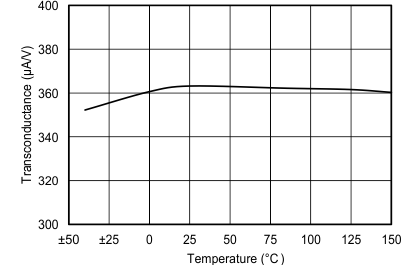 Figure 6-1 Error
Amplifier Transconductance vs Temperature
Figure 6-1 Error
Amplifier Transconductance vs Temperature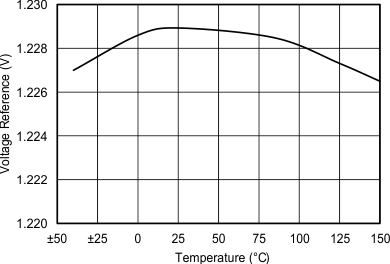 Figure 6-3 Feedback Voltage Reference vs Temperature
Figure 6-3 Feedback Voltage Reference vs Temperature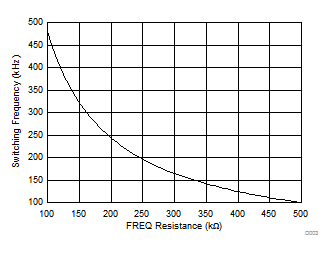 Figure 6-5 Frequency vs FREQ Resistance Low Frequency Range
Figure 6-5 Frequency vs FREQ Resistance Low Frequency Range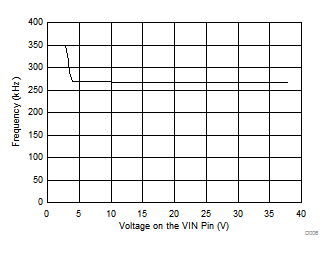
| TA = 25°C |
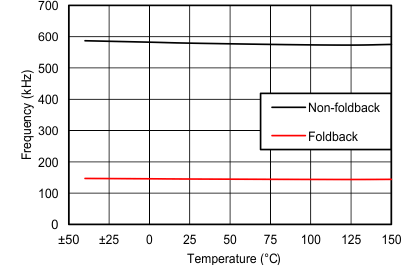
| R(FREQ) = 80 kΩ |
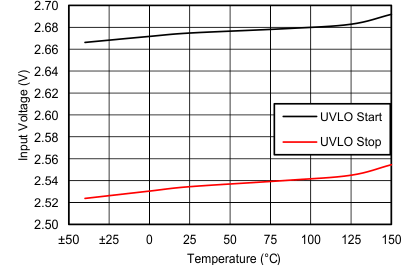 Figure 6-11 Input
Voltage UVLO vs Temperature
Figure 6-11 Input
Voltage UVLO vs Temperature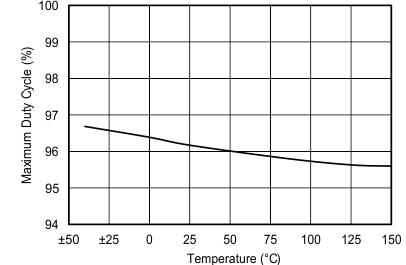
| R(FREQ) = 80 kΩ |
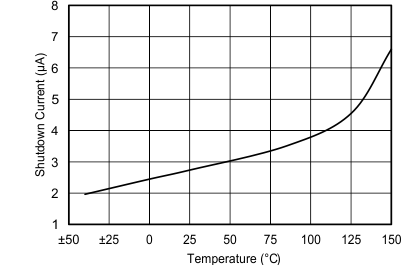 Figure 6-15 Shutdown Current vs Temperature
Figure 6-15 Shutdown Current vs Temperature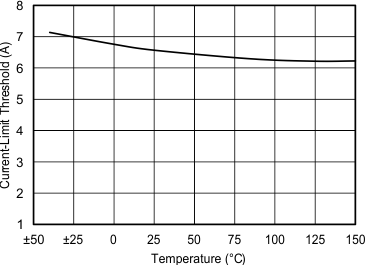 Figure 6-2 Switch Current Limit vs Temperature
Figure 6-2 Switch Current Limit vs Temperature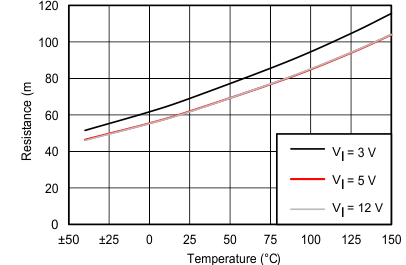 Figure 6-4 Static Drain Source On-State Resistance (rDS(on)) vs
Temperature
Figure 6-4 Static Drain Source On-State Resistance (rDS(on)) vs
Temperature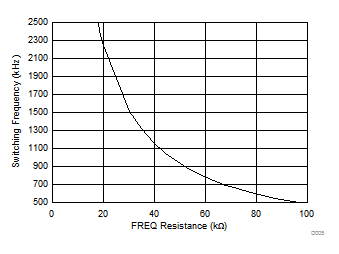 Figure 6-6 Frequency vs FREQ Resistance High Frequency Range
Figure 6-6 Frequency vs FREQ Resistance High Frequency Range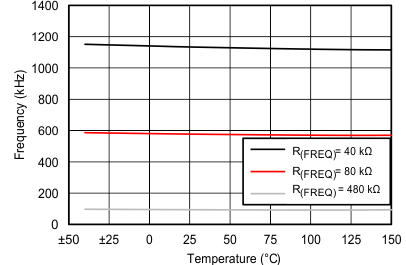
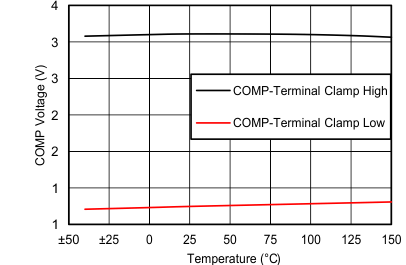
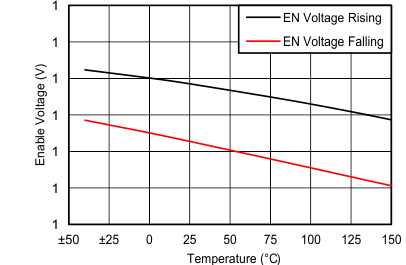 Figure 6-12 Enable Voltage vs Temperature
Figure 6-12 Enable Voltage vs Temperature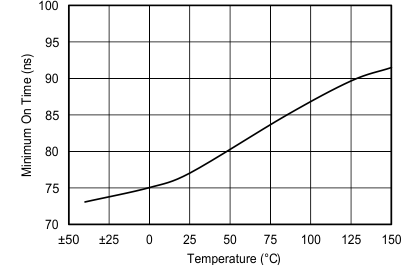
| R(FREQ) = 80 kΩ |
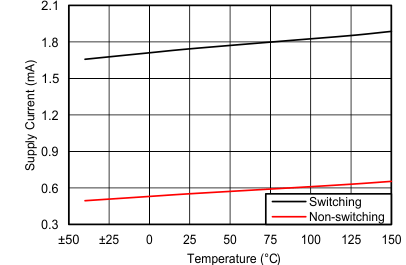 Figure 6-16 Supply Current vs Temperature
Figure 6-16 Supply Current vs Temperature